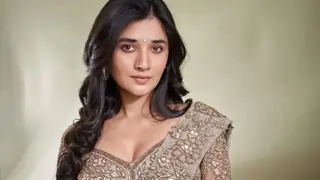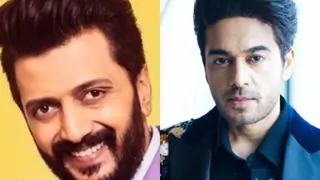Muslims in India normally follow marriage customs that are similar to those practiced by Muslims of the Middle-East, which are based on Islamic convention.[7] These Islamic traditions were first handed down to medieval Indians by propagators of the Islamic religion that involved sultans and Moghul rulers at the time.[8] The blueprint is the same as the Middle-Eastern Nikah,[7] a pattern seen in marriage ceremonies of Sunnis and Shias.[8] Traditional Muslim Indian wedding celebrations typically last for three days.[7]Prior to the observance of the wedding ceremony proper, two separate pre-wedding rituals, which involve traditional dancing and singing, occurs in two places: at the groom's house and at the bride's home.[8]
On the eve of the wedding day, a bridal service known as the Mehndi ritual or henna ceremony is held at the bride's home. This ritual is sometimes done two days before the actual wedding day. During this bridal preparation ritual, turmeric paste is placed on the bride's skin for the purpose of improving and brightening her complexion. Then henna or mehndi, is applied on the bride's hands and feet, by the mehndiwali, a female relative.[7][8]
The Indian Islamic wedding ceremony is also preceded by a marriage procession known as the groom's baraat. From this convoy arrives the groom, who will share a sherbet drink with a brother of his bride, while at the place of the marriage ceremony which could either be at the house of either groom or bride or another venue. This drinking ritual happens as the sisters of the bride does some tomfooleries and playfully striking guests using flower-filled cudgels.[7]
The wedding ceremony, known as Nikaah, is officiated by the Maulvi, a priest also called Qazi.[7][8] Among the important wedding participants are the Walises, or the fathers of both groom and bride.[7] and the bride's legal representative.[8] It is the bride's father who promises his daughter's hand to the groom, a ritual known as the Kanya-dhan.[8] Also in this formal occasion, particularly in conventional Islamic weddings, when men and women typically have separate seating arrangements. Another common practice are wedding sequences that include the reading of Quranic verses, the groom's proposal and bride's acceptance parts known as the Ijab-e-Qubul[7] or the ijab and qabul;[8] the decision-making of the bride's and groom's families regarding the price of the matrimonial financial endowment known as the Mehar[7] or Mehr (a dower no less than ten dirhams[8]), which will come from the family of bridegroom. Blessings and prayers are then given by older women and other guests to the couple.[7] In return the groom gives salutatory salaam wishes to his blessers, especially to female elders.[8] The bride also usually receives gifts known generally as the burri, which may be in the form of gold jewelries, garments, money, and the like.[8]
The marriage contract document is known as the Nikaahnama, and is signed not only by the couple but also by the Walises and the Maulvi.[7]
After the Nikaah, the now married couple joins each other; to be seated among commonly separately-seated male and female attendees.[7] The groom is customarily brought first to the women's area in order for him to be able to present gifts to his wife's sister.[8] Although jointly seated, the bride and the groom can only observe one another via mirrors, and a copy of the Quran is placed in between their assigned seats. With their heads sheltered by a dupatta and while guided by the Maulvi, the couple reads Muslim prayers.[7]
After the wedding ceremony, the bride is brought to her new home: the house of her husband, to be welcomed by her mother-in-law who will be holding a copy of the Quran over the bride's head.[7]
The wedding reception hosted by the groom family is known as the Valimah[7] or the Dawat-e-walima.[8]
The lesser known thing about Indian Islamic marriage laws is, as per Indian Sheriat law which is applicable to all Muslims in India, polygamy is legal. In India its legal for a Muslim man to marry maximum of four women with out divorce and with few conditions. Any Muslim man or women can marry a person from different religion like Hindu, Christian, Atheist or Sikhs, with out converting to other religion or with out asking other person to convert to Islam through a Civil marriage under Special Marriage Act, 1954. Even if both the persons are Muslims they can have civil marriage( court marriage) under Special Marriage Act, 1954. From women's perspective, her legal rights are better protected if married under Special Marriage Act 1954, when compared to Islamic Sheriat Law( Muslim personal Law). In the small state of Goa, where a civil code based on the old Portuguese Family Laws exists, and Muslim Personal Law is prohibited.
[edit]Malay
Malay wedding traditions (Malay: Adat Perkahwinan Melayu; Jawi script: ???? ???????? ?????), such as those that occur in Brunei,Singapore, Malaysia, and parts of Indonesia and Thailand normally include the betrothal, the determination of the bridal dowry known as the hantaran agreed upon by both the parents' of the groom and the bride (usually done one year before the solemnization of marriage), delivery of gifts and the dowry (the istiadat hantar belanja), the marriage solemnization (theupacara akad nikah) at the bride's home or in a mosque, the henna application ritual known as the berinai, the costumechanging of the couple known as the tukar pakaian for photography sessions, a Sunday feast-meal for guests, and thebersanding or the sitting-in-state ceremony of the couple at their own home. Prior to being able to meet his bride, sometimes amak andam, a "beautician", or any member of the family of the bride will intercept the groom to delay the joining of the would-be spouses; only after the groom was able to pay a satisfactory "entrance fee" could he finally meet her bride. The wedding ceremony proper is usually held on a weekend, and involves exchanging of gifts, Quranic readings and recitation, and displaying of the couple while within a bridal chamber. While seated at their "wedding throne", the newly-weds are showered with uncooked rice and petals, objects that signify fertility. The guests of the wedding celebration are typically provided by the couple with gifts known as the bunga telur or "flower and egg". The gifted eggs are traditionally eggs dyed with red coloring and are placed inside cups or other suitable containers bottomed with glutinous rice. These eggs also symbolize fertility, a marital wish hoping that the couple will bear many offspring. However, these traditional gifts are now sometimes replaced by non-traditional chocolates, jellies, or soaps.[9]
The marriage contract that binds the marital union is called the Akad Nikah, a verbal agreement sealed by a financial sum known as the mas kahwin, and witnessed by three persons. Unlike in the past when the father of the bride customarily acts as the officiant for the ceremonial union, current-day Malay weddings are now officiated by the kadhi, a marriage official and Shariat or Syariat Court religious officer.[9]




























